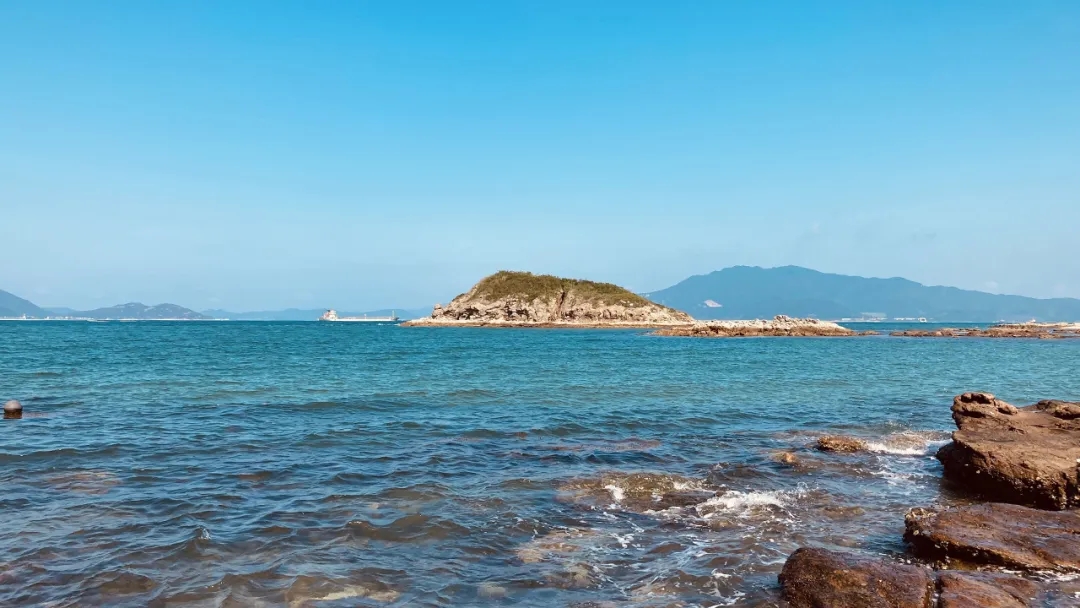

Video and photos by Liu Xudong
Every day when you walk through the concrete jungle, do you still remember the forest, the sea and the cloud? Have you ever stopped to take the time to observe the vast cycle of life in nature?
He is Ma Haipeng, one of the Top 10 Youth Public Welfare Figures of Shenzhen. An outstanding instructor in nature education, Ma has a nature name called “Ma Che (meaning ‘carriage’).” Ma is a keen nature explorer who is passionate about environmental protection. He is now going to take us on a nature journey in Shenzhen and tell us stories that happen every day in nature.
Shenzhen, with a total area of 1,997 square kilometers, boasts a vast sea area of 1,145 square kilometers and 260 kilometers of coastline. Coastlines are the lifelines of Shenzhen.
On Shenzhen’s easternmost coastline stands Baguang, a natural tourist spot surrounded by mountains on three sides and overlooking the sea. Baguang is an underestimated hidden gem, as centuries-old trees like coastal heritiera, ficus, autumn maple and wild syzygium are quietly scattered along the winding coastlines and growing in Hakka villages.
Here is a distribution area for ancient coastal heritiera which is rarely seen anywhere else in the world. Over 1,500 ancient coastal heritiera trees are growing here.
The unique and exceptional geographical location has made Baguang one of the few spots in Shenzhen for seaside foraging. As the tide recedes the beach is left bare, and people walk along the coast to pick up fish. Catches including oysters on the reef, clams in sands as well as anemones and crabs in rock seams are the generous presents that nature gives to hard-working people. It’s not just humans who forage or catch their prey!
Over the past few years, Baguang villagers have been relocated, leaving only one ancestral temple here. In the construction of the Baguang Nature School, everything natural was kept intact, which shows Baguang villagers’ reverence for nature.
A couple of days ago, the newly opened Baguang Nature School organized its first off-line event. Ma Haipeng and Liu Yi, Doctor of Environmental Science, led a group of children to the coastline and passed on knowledge about intertidal benthos, the assemblage of organisms inhabiting the seafloor.
Dongchong, the deepest part of Dapeng Peninsula on the winding coastlines of Shenzhen, is like a calm seashell that withstands the washing of time. Fishermen who have lived here for generations go to the sea every year during the fishing season and use the survival skills passed down by their ancestors in exchange for the gifts from the sea.
In the beautiful Yangmeikeng stands the Shenzhen Ecological Monitoring Center which is surrounded by mountains and sea. Shenzhen Ecological Nature School, where Sun Feng works, is at the center.
The Ecological Nature School is the only one of its kind in China, and one of its regular projects is the cultivating of nature volunteers who are trained to promote nature education to the public.
Presentation after presentation, generation after generation, nature education is imparted to the general public.
Perhaps most Shenzheners’ impressions about forests are related to Wutong Mountain. Indeed, there is no lack of nature explorers anytime on the mountain. They have left their footprints on almost every corner of this 42-square-kilometer terrain. Wutong Mountain offers most people things from nature that they desire the most: clear brooks, towering trees, birdsongs, mountain trails and fresh air. Certainly, there may be some unexpected discoveries that surprise you.
There is a special plant community that grows in the intertidal areas in Shenzhen: mangroves. In Chinese, mangroves are referred to as “Hongshu (meaning ‘red trees’),” a result of the fact that the barks of mangroves are rich in tannins which can easily be oxidized and turned to a red color when cut and exposed to air. Tannins help protect the trees from the seawater erosion.
In 2019 the overall pollution index of Shenzhen Bay dropped by 32.5 percent under the joint efforts by multiple departments. Rare animals such as leopard cats and black-faced spoonbills are frequently spotted in Shenzhen Bay. On May 1, 2020, the Regulations of the Shenzhen Special Economic Zone on Eliminating the Consumption of Wild Animals were officially implemented.
Tides rise and fall day and night, magnificent ocean views attract tens of thousands of admirers to their bosoms. Young people stroll under the starry sky and revel in sea breezes in search of their happiness and dreams.
Our experiences here again remind us that the fate of humanity is at the mercy of Mother Nature.
More photos:








